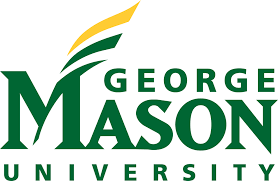George Mason University’s undergrad research conference energizes attendees
There was something different about this year’s National Conference on Undergraduate Research, and it had nothing to do with the quality of the presentations, which, as always, was high.
It was, though, the first time since 2019 that the conference was held in person, after its cancellation in 2020 because of the pandemic and two subsequent years as a virtual event.
“The energy at the conference was pretty high,” said Karen T. Lee, assistant director of George Mason University’s Office of Student Scholarship, Creative Activities, and Research (OSCAR). “The students seemed really enthusiastic.”
Thirty-nine Mason students attended the April conference at University of Wisconsin–Eau Claire, where they made new friends, networked, and gained experiences that will help them in their studies and careers.
The annual conference is a valuable addition to the rich research environment at Mason that allows students to follow their life ambitions.
“It was pretty great,” said senior biology major Gwendolyne Fields, a member of Mason’s Honors College who presented her research into the growth rates of Namibian and Somaliland cheetah cubs. “Definitely a lot going on, and so many people. It was cool to see all these other incredible projects that people were doing.”
The word “great” was used by several Mason students to describe the event, including Kayleigh Newman, a junior kinesiology major, and Haruka Mori, a senior forensic science major.
“The conference is interdisciplinary, and I was able to see a lot of different presentations in a lot of different fields,” Mori said. “I feel like if I know a lot of different information from different fields, I can also use that for my research. It makes it possible to see it from a different perspective.”
Added Newman: “I was surprised how much I liked looking at the posters outside my major. It also was interesting to hear the keynote speakers and hear what they were talking about in terms of their research and professional experience.”
Mori’s research, turning centrosymmetric compounds into non-centrosymmetric compounds, was extraordinary, said Mason chemistry professor Xiaoyan Tan.
Non-centrosymmetric materials are crucial for non-linear optics and spintronics, but are much less prevalent than centrosymmetric materials. So when Mori changed a centrosymmetric barium-iridium-oxide compound to non-centrosymmetric by replacing half of the iridium with titanium, it was worth lauding.
“She did more than great,” said Tan, an assistant professor in the Department of Chemistry and Biochemistry. “Most undergraduates cannot make this. She has very high standards. She was very careful and a good scientist.”
Mori said she enjoyed the give-and-take with her audience during her presentation.
“The audience was specifically from the chemistry field, so the questions they asked were specific to the field,” she said. “It wasn’t general questions. It was why did you use this method instead of this? I was able to see where those questions were coming from and use that for future research.”
Newman’s research was to analyze data from a recent three-year period in which fire department personnel engaged in a mandatory fitness program. The result: personnel made gains in pushups, pull-ups, and curl-ups, but did not gain much in cardiovascular fitness.
“We recommended that cardiovascular fitness be focused on more, and then we let the fire department look at the data and interpret that to maybe make some changes,” Newman said.
Add Fields’ research that showed Namibian cheetah cubs have a higher growth rate than Somaliland cheetah cubs, and you have an idea of the breadth of research at the conference and at Mason, Virginia’s largest and most innovative public university.
“It’s a chance to see what other students are doing at other places, the sense of community,” Lee said of the conference. “Even if it’s different subjects, they’re all doing the same thing you’re doing.”

